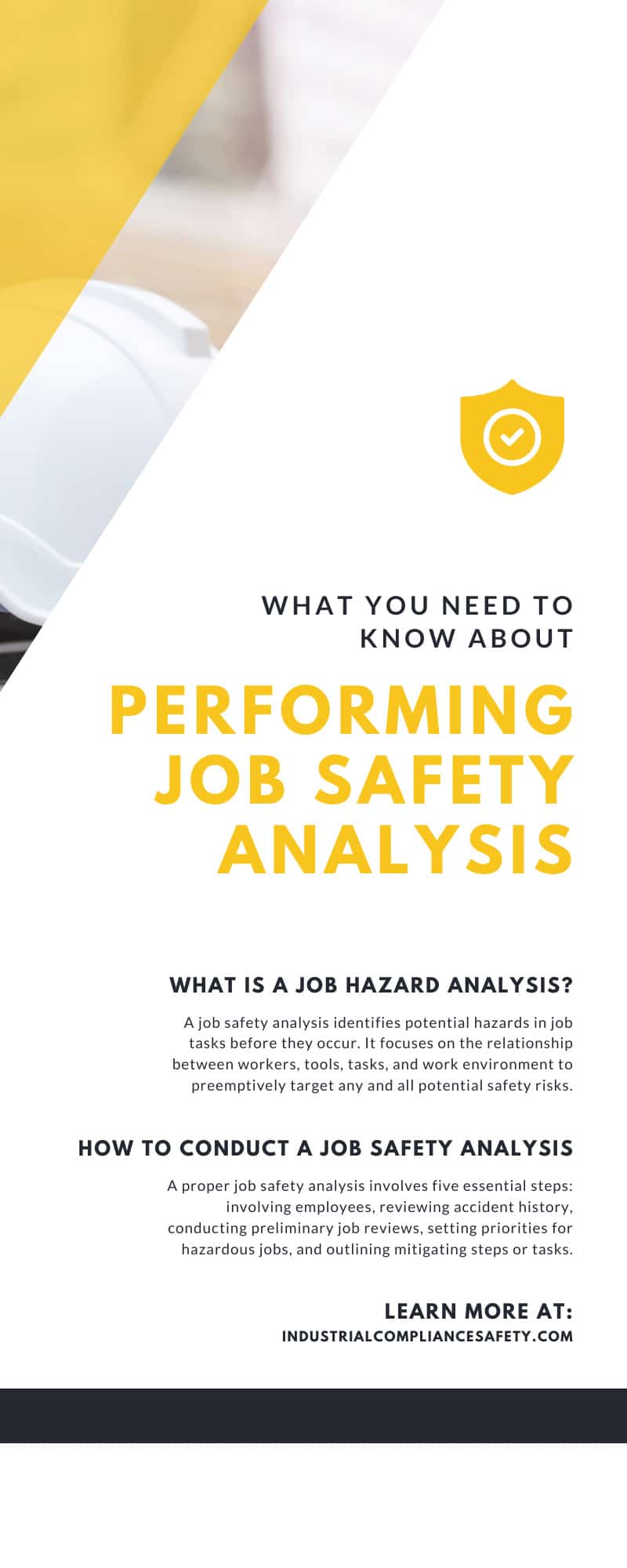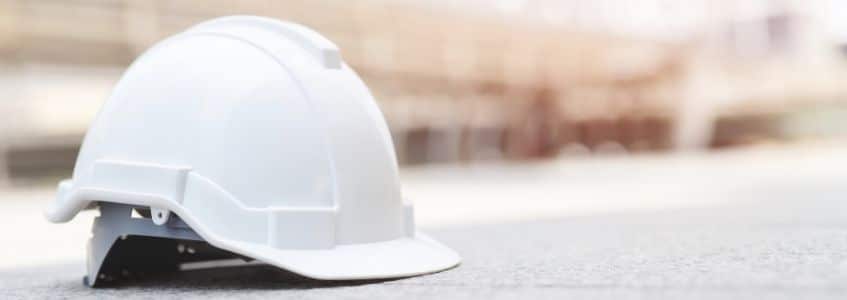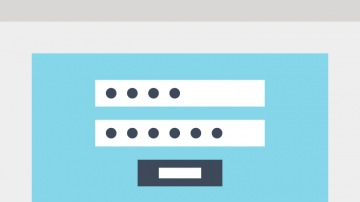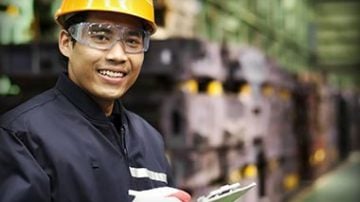While there are many ways industries can improve the safety and well-being of employees, these methods may not entirely reduce all the risks that created these issues in the first place. That’s where a job safety analysis comes in. Read below for what you need to know about performing a job safety analysis and how it benefits your company.
Ultimately, any manager or supervisor must conduct these analyses on a routine basis to reduce workplace accidents, injuries, or illness and create a stronger safety culture in their industry for everyone involved.
What Is a Job Hazard Analysis?
A job safety analysis identifies potential hazards in job tasks before they occur. It focuses on the relationship between workers, tools, tasks, and work environment to preemptively target any and all potential safety risks. After identifying these risks, it’s up to employers to reduce or eliminate the hazards to an acceptable risk level. While this is typically a role for foremen and supervisors, anyone should understand job safety analyses to further enrich the work culture around them.
Employees must be able to identify hazards in their respective workplaces. For clarity, a hazard is any risk for harm typically associated with a condition or activity that, if left uncontrolled, can result in an injury, illness, or fatality. Job safety analyses are an effective means to identify, control, reduce, and eliminate these hazards to create a safer work environment for everyone involved. Job safety analyses further help educate and impact employee training to keep everyone in line with proper workplace practices and behaviors.
How To Conduct a Job Safety Analysis
A proper job safety analysis involves five essential steps: involving employees, reviewing accident history, conducting preliminary job reviews, setting priorities for hazardous jobs, and outlining mitigating steps or tasks.
First, involve your employees. Communicate the expectations and findings of this safety analysis to minimize oversight, ensure a quality analysis, and gain insight on any risky tasks or hazards. Then, review your accident history. A thorough overview of your company’s accident history identifies weak points, which will help with identification and mitigation. Don’t forget to account for any “near misses” in which an accident or illness did not occur but could have.
After this, conduct a preliminary job review in which you discuss your findings with your employees. Take immediate action to correct life-threatening issues. Otherwise, plan out your control tactics for minor, yet still important, hazards. Make a list of these issues from most threatening to least threatening. Always address the worst issues first, as these pose the greatest threat to worker safety.
Finally, outline the steps taken to reduce these hazards. Watch employees as they perform their respective tasks and take note of all steps taken. This should be brief, as you want to identify hazards as efficiently as possible. Remind workers you’re not reviewing their work in itself, but rather the risks and hazards that go along with it. As you identify these hazards, keep note of what can go wrong, all potential consequences, contributing factors, and the likeliness of this issue repeating. Review your job safety analysis on a periodic basis to ensure consistent safety practices.
Preventing Workplace Hazards
Once you’ve identified and resolved the issues at hand, another important thing to know about job safety analysis is how to prevent these issues from reoccurring. Mainly, consider the possible control methods that will eliminate or reduce these issues from occurring in the future. This may involve physically changing a machine to prevent risk exposure or implementing administrative controls to improve the overall safety culture in the workplace. Even basic personal protective equipment (PPE) reduces exposure to work hazards.
Consult your employees for a collaborative company model on ways to prevent these risks. Communicate any immediate or future changes with employees, along with expectations on ways to circumvent injury or illness. It may further help to hire a professional depending on your industry. Insurance companies, local fire departments, or private consultants like Industrial Compliance and Safety all have the knowledge and experience to conduct a job safety analysis for your company.
You can also contact your local OSHA representative to inspect the job site and identify possible safety and health hazards if you cannot do so yourself. Ultimately, any workplace safety analysis will further improve the safety culture in your company, no matter who performs it. In addition to reducing health or safety hazards, this will reduce time and money spent on worker’s compensation and improve worker productivity.
Affected Industries
Although managers, foremen, or supervisors must conduct job safety analyses in every workplace, there are some industries that demand greater risk assessment. All major manufacturing and industrial sectors need consistent, thorough job safety analyses. For example, the oil and gas, pharmaceuticals, construction, energy and utilities, mining, telecommunications, and transportation industries must have job safety analyses to identify workplace hazards.
Again, a job safety analysis is relevant for all businesses and professions. However, the immense workload in these specific industries requires consistently thorough job safety analyses to prevent workplace accidents or illnesses with respect to the challenging tasks at hand or the risks involved.
Common Hazards To Know
When on the lookout for potential workplace hazards, each industry has unique and specific tasks that impact the safety and well-being of workers. Still, there are a few common hazards found in almost every industry that are important to know for any job safety analysis. These include toxic hazards, flammable hazards, corrosive hazards, power hazards, human error, and external hazards. Chemicals, explosions, electrical shocks, ergonomics, falls, heat, mechanical failure, radiation, extreme temperatures, and weather all fit into these categories. Look out for these hazards in your workplace, along with specific hazards pertinent to your industry.
Industrial Compliance and Safety has all the pre-qualification safety programs you need to perform a thorough job safety analysis in your industry. For instance, we offer safety programs for pre-qualification in construction to improve the safety culture and reduce construction hazards for your crew. Our pre-qualification programs prepare you for ISNetworld® and CSS certifications to further enhance your safety and compliance. No matter what, Industrial Compliance and Safety helps you become certified to demonstrate the best safety practices for clients and workers alike.






